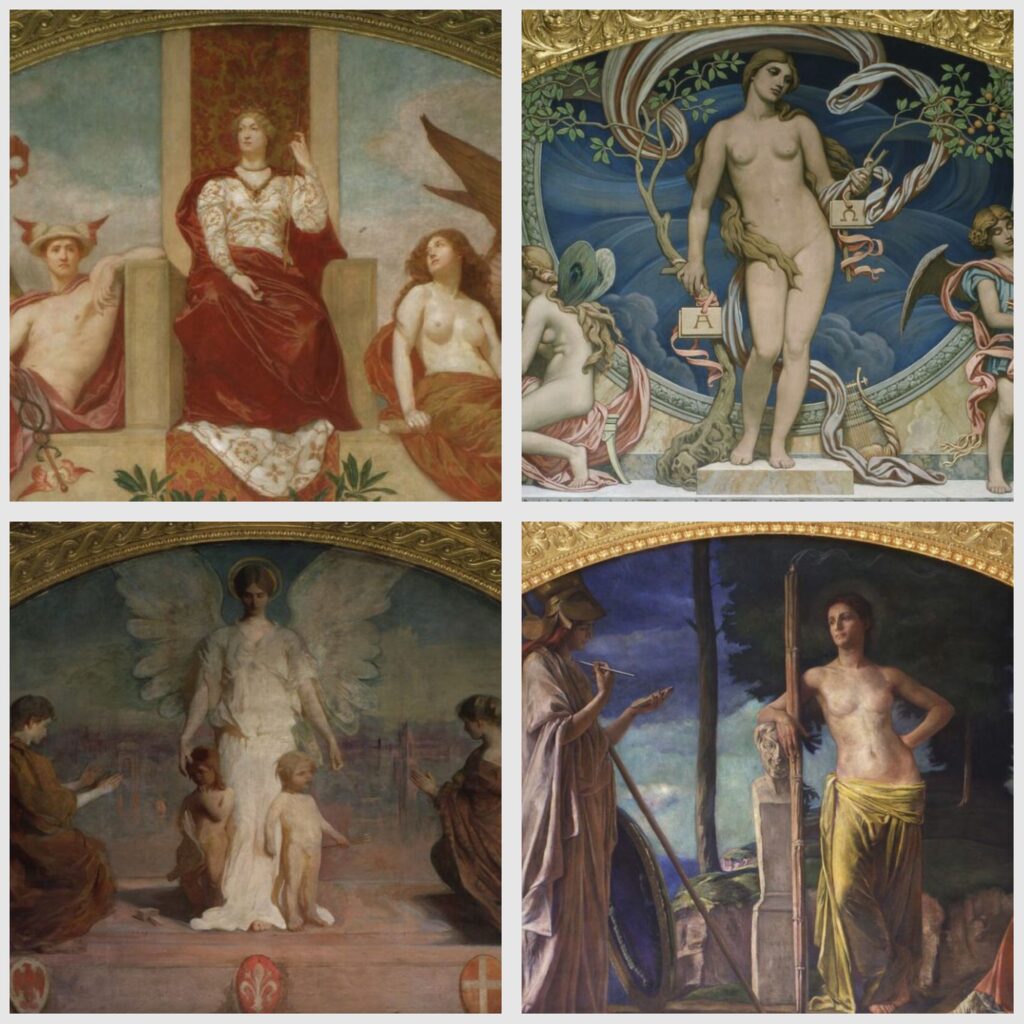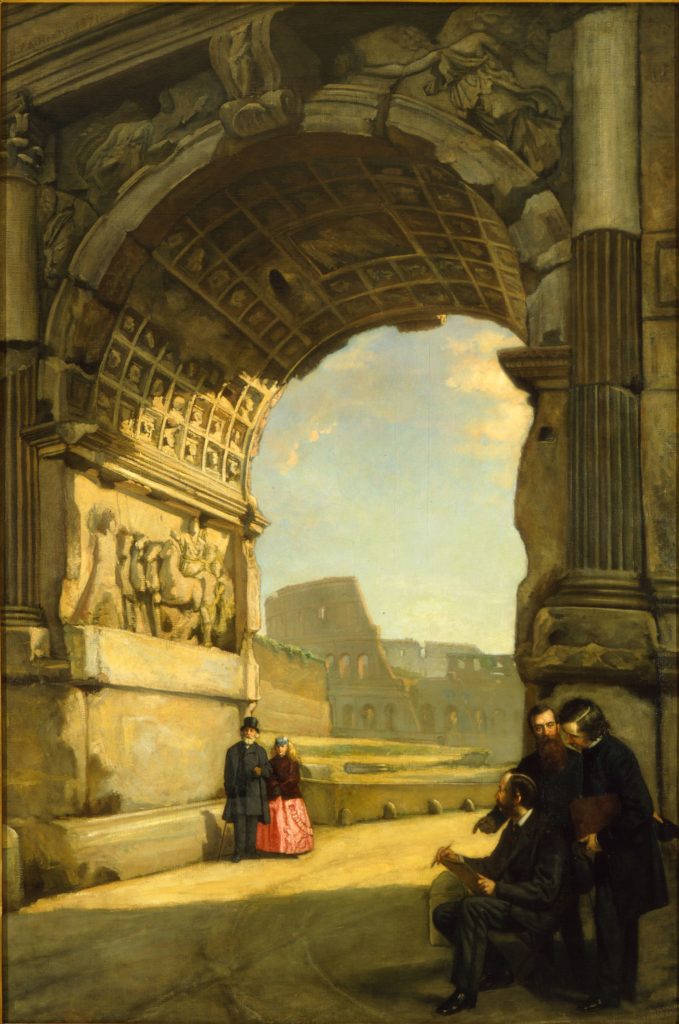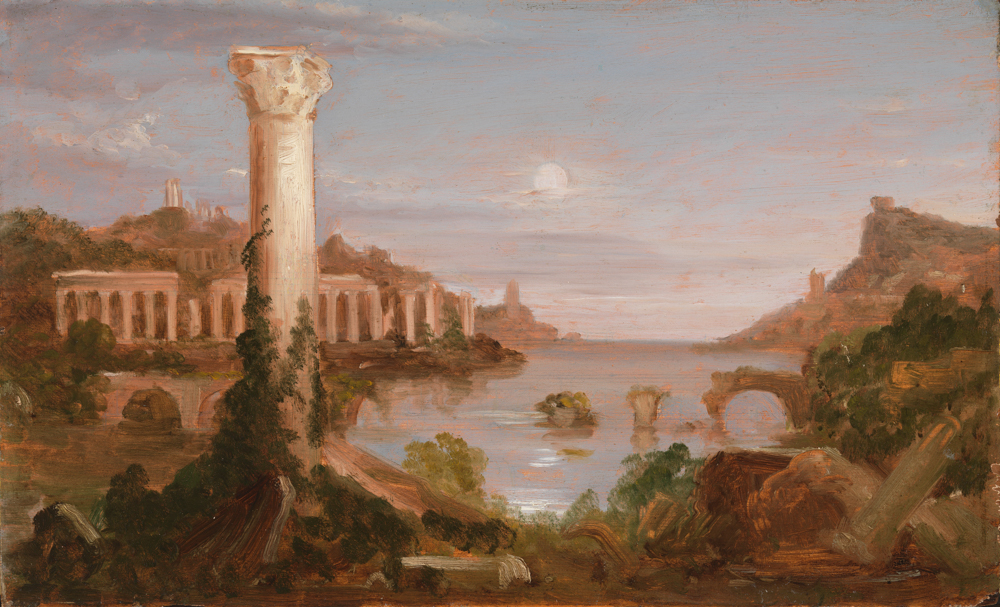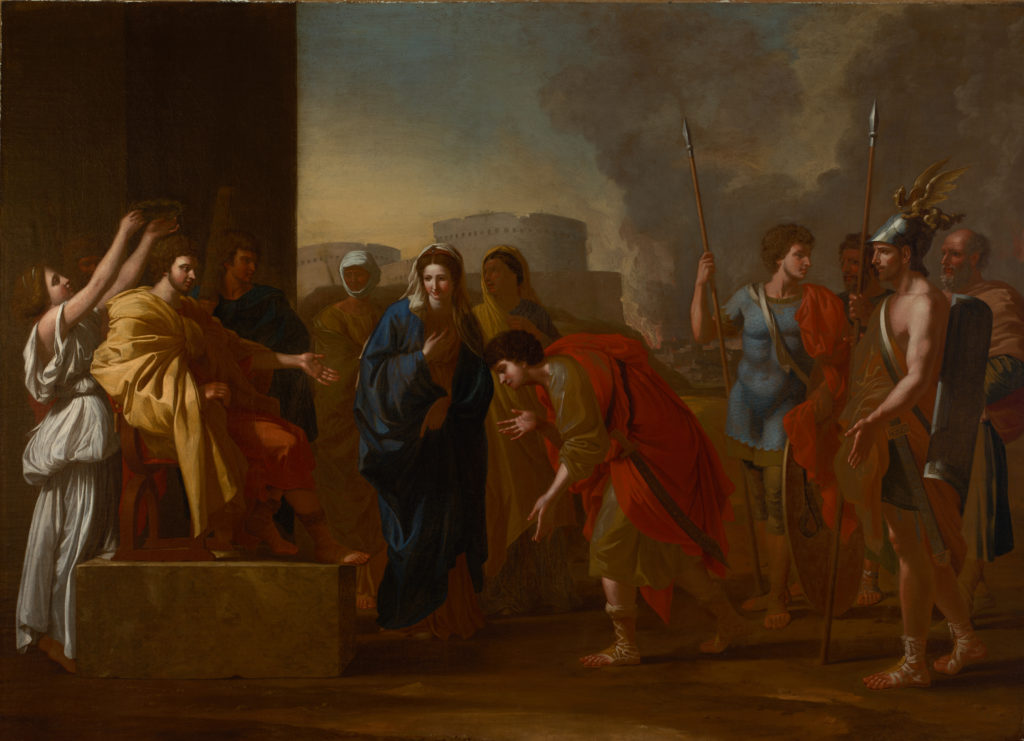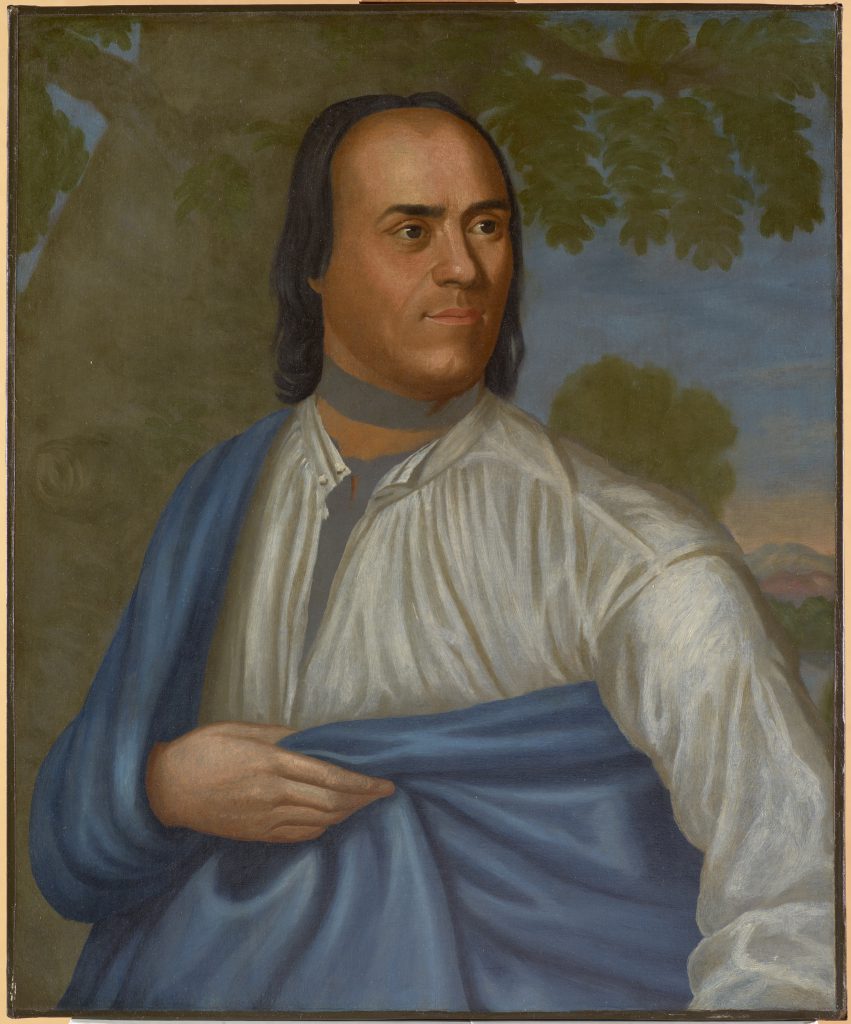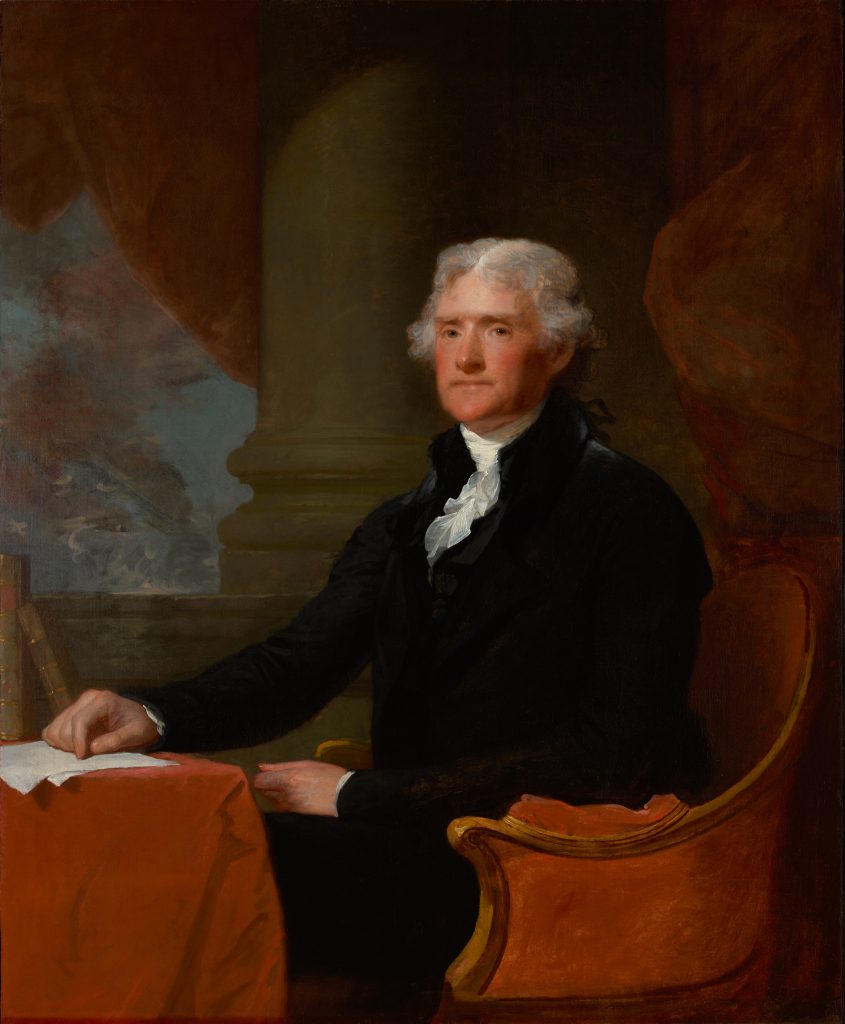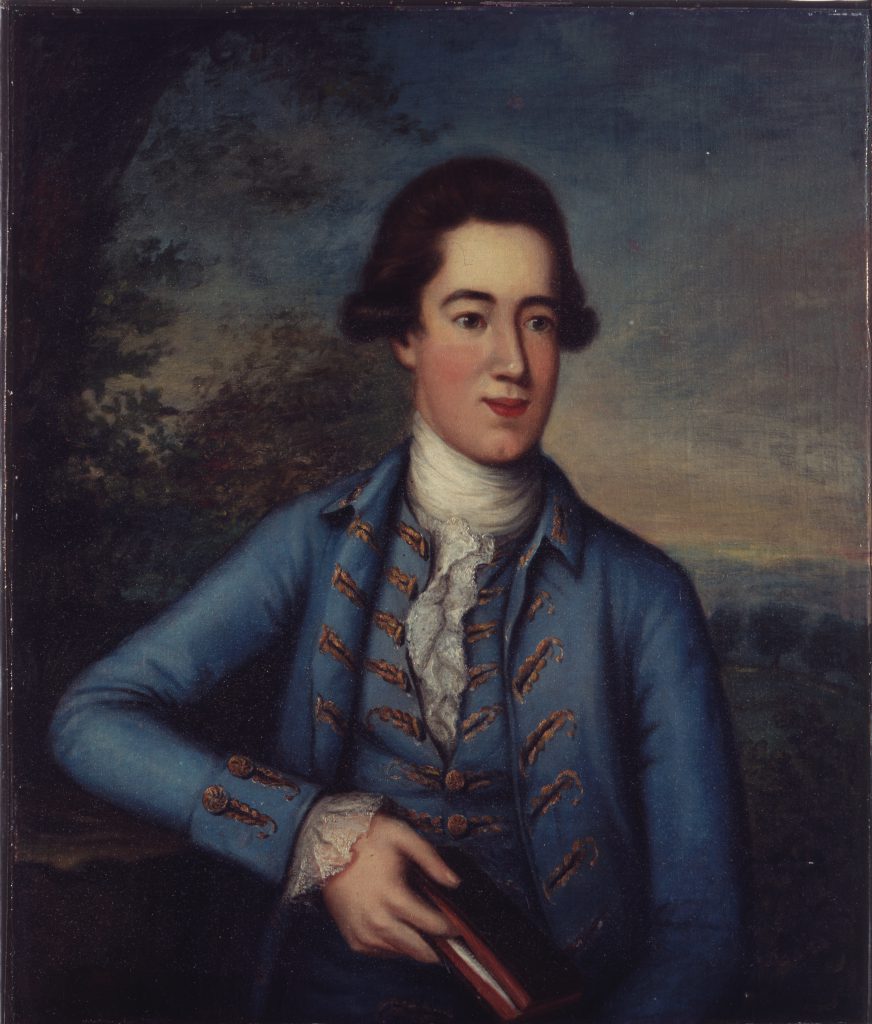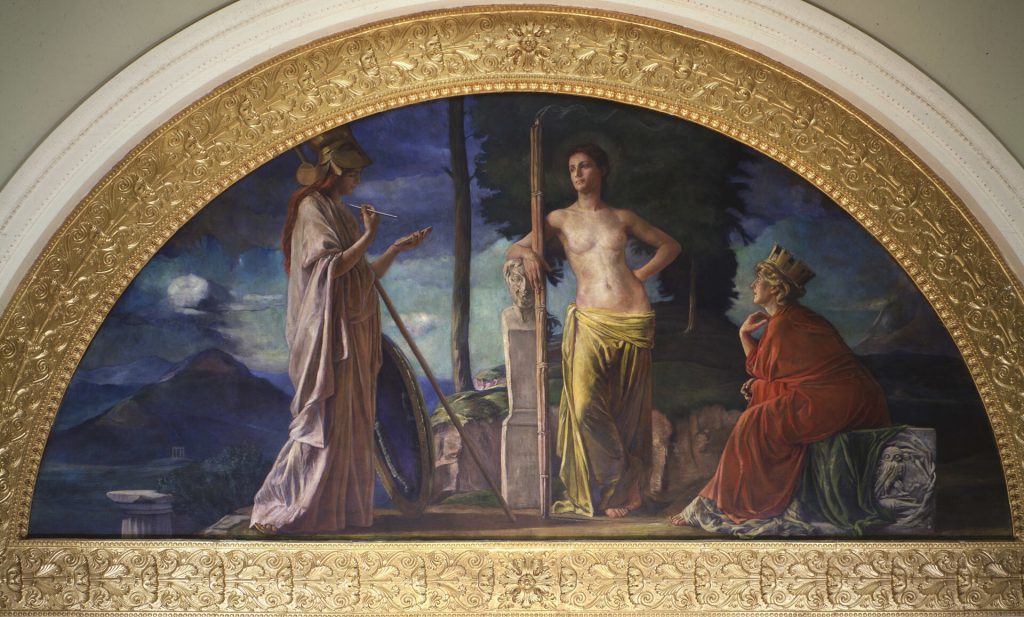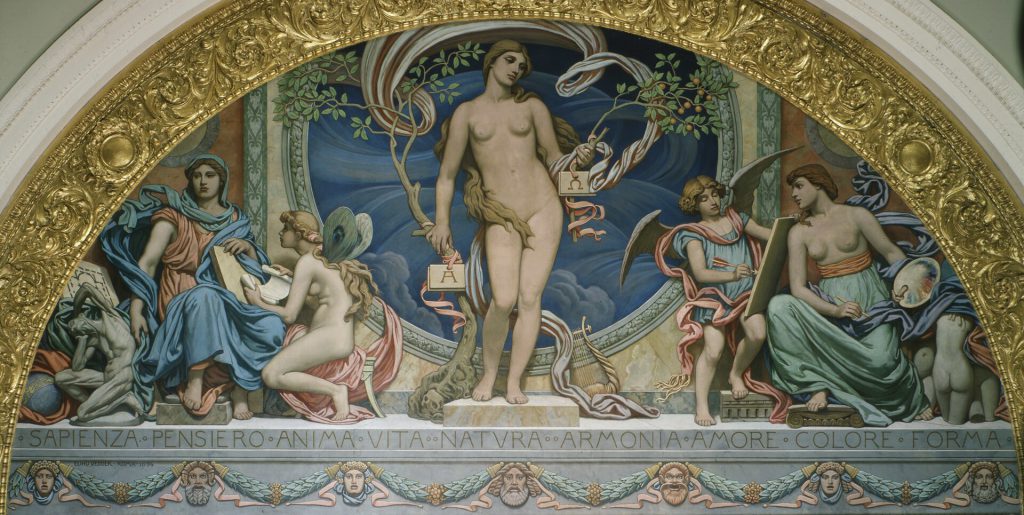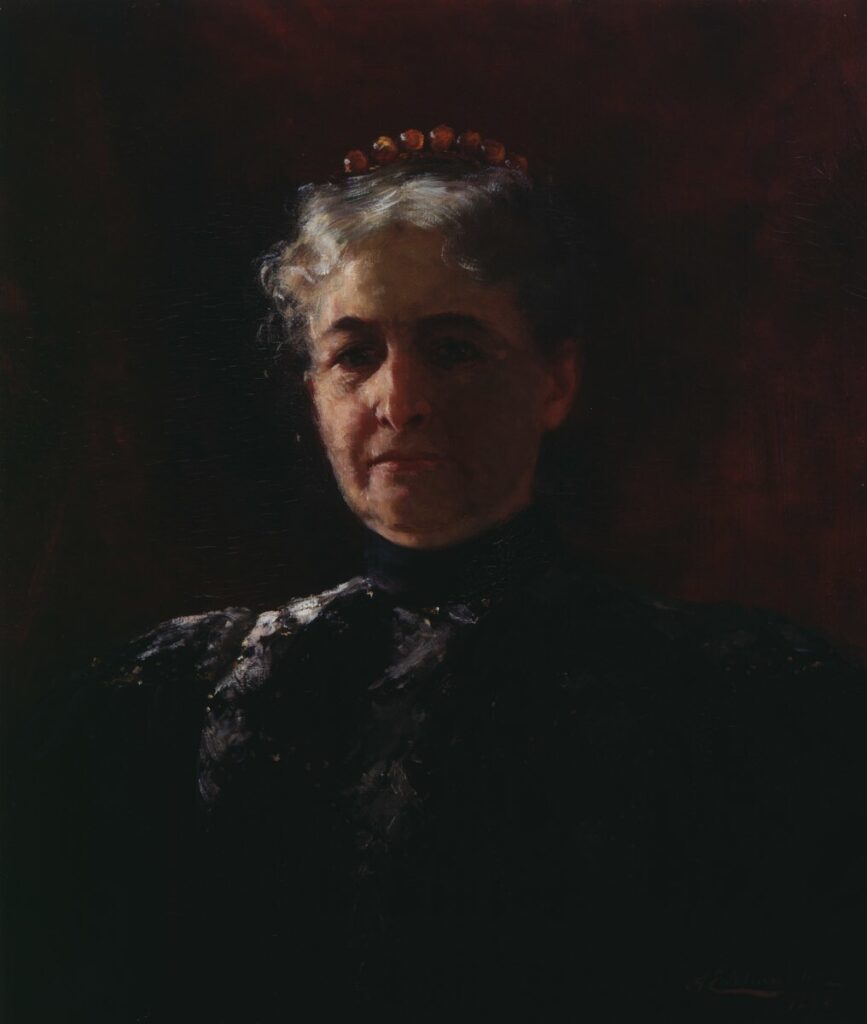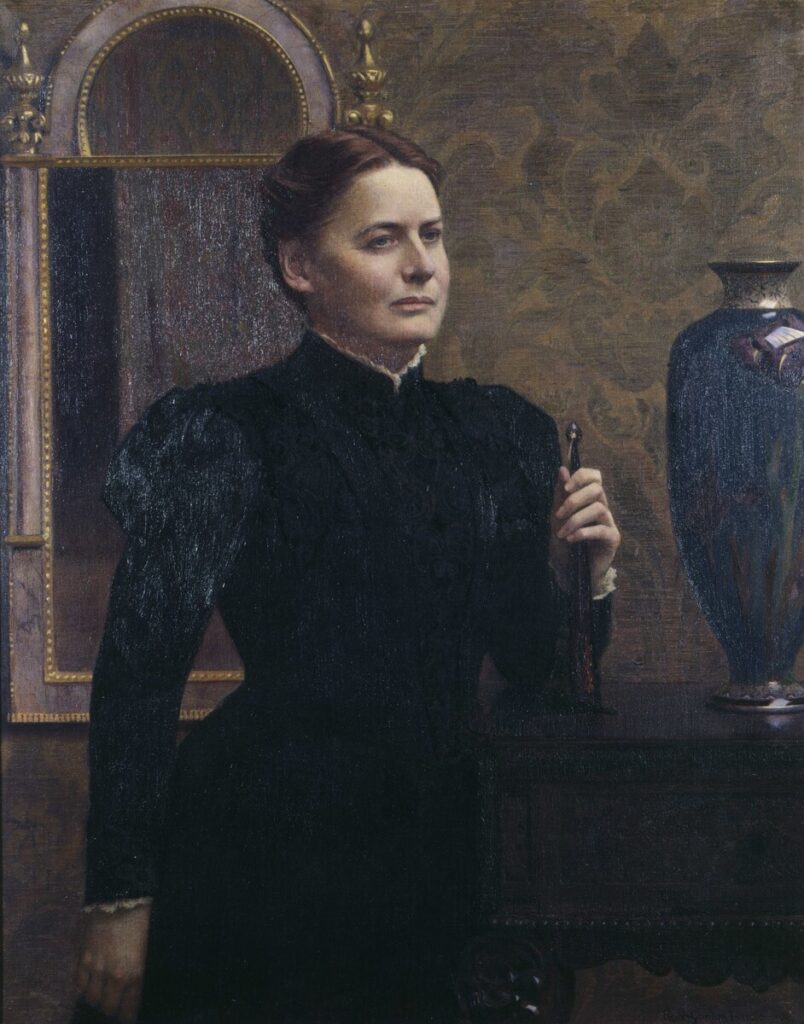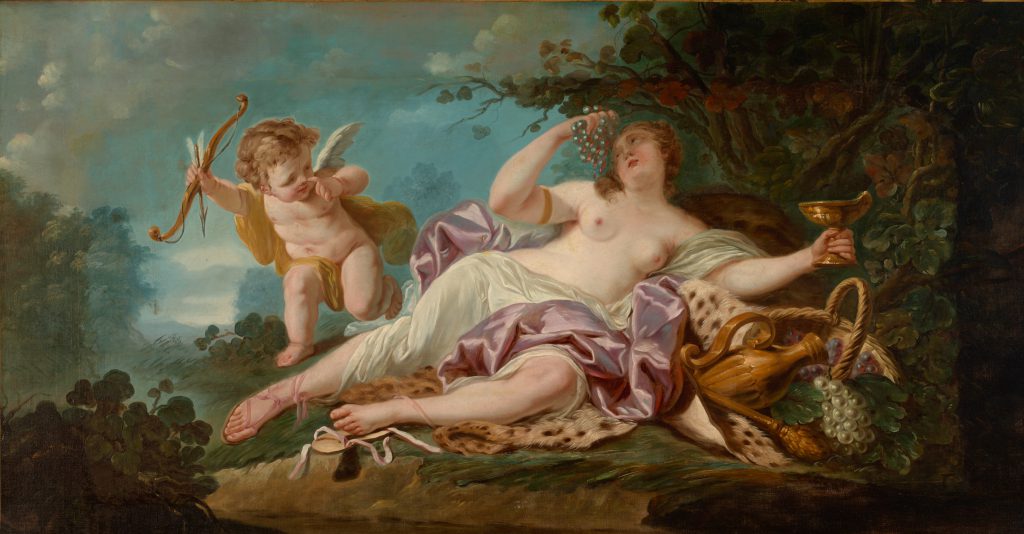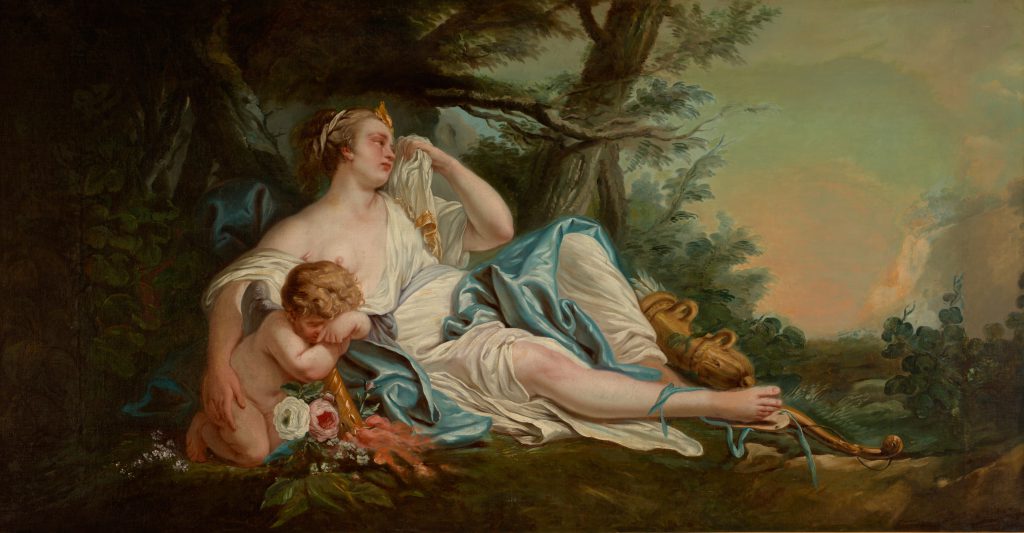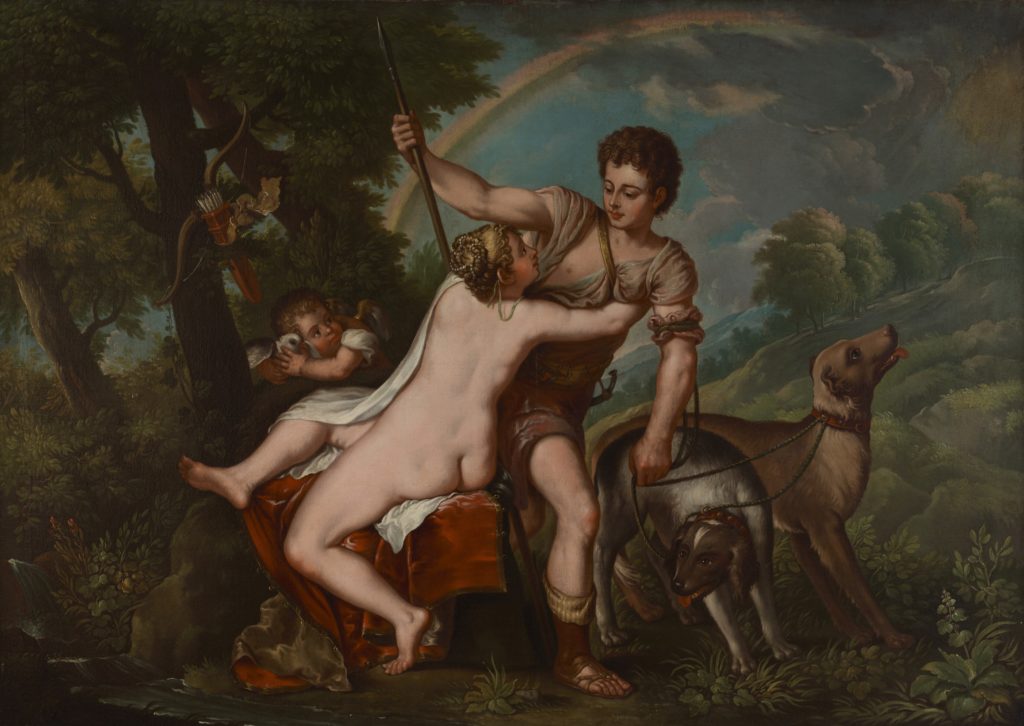
Bequest of the Honorable James Bowdoin III
1813.21James Bowdoin III owned five images of Ovid’s tale of Venus and Adonis: three paintings and two drawings. This is a copy of the sixteenth-century painting Venus and Adonis by Titian, who painted the original for noted sensualist Cardinal Alessandro Farnese around 1547. Most commentators on this invention by Titian dwell on the eroticism of Venus, whose brightly lit naked back and bottom attract the viewer’s attention. Another classical figure in the painting, however, deserves a look: cupid cuddling a white dove as he watches the lovers’ unfolding tragedy. Cupid was clearly a favorite of the Bowdoins, an ancient figure that plays a role in several of the largest paintings in Bowdoin’s collection including The Education of Cupid after Titian, a Danaë after Titian, Schut’s Allegory of Fruitfulness, and a Sleeping Cupid after Mignard.
Numerous versions of Titian’s popular image were produced after the 1547 original; there are over two dozen made by Titian and his studio and hundreds later by copyists like the anonymous painter of Bowdoin’s example. Scholars have sorted these works into categories, and Bowdoin’s copy falls into the “Farnese” type, as does the version at the Metropolitan Museum of Art. The Bowdoin copy occupies a special subgroup of the “two dog, rainbow” type in that it shows an extended landscape on the left and right, as well as the top and bottom. Here, Cupid has hung up his bow and quiver of arrows, and the mild youngster makes a poignant counterpoint to the doomed spear-bearing Adonis and his eager hunting dogs.
Sarah Bowdoin’s diary from Paris clearly indicates her esteem for “beautiful children” like Cupid pictures. On October 24, 1806, following her trip to the Louvre, she writes, “…the picture I think I was most pleased with, was a most beautiful infant Boy, laying a sleep in a Basket Cradle, quite naked, with a beautiful, widowed Mother, very young leaning over it.” This attraction to pleasant images of young children fits in well with family portraits of the Bowdoin children, such as Blackburn’s double portrait of Elizabeth and James Bowdoin III. It also reflects a taste for such imagery, epitomized by the hugely popular cupids of British painter Sir Joshua Reynolds, whose Venus Chiding Cupid (ca. 1776), Diana Disarming Cupid (1769), Mischievous Cupid (1774), and Cupid Sleeping (ca. 1789) were all captured in engravings and mezzotints by the 1780s, making them widely available. This vogue foreshadows a vast array of domesticated winged children who began to appear on paper greetings in the 1820s in Britain and in the US.
Collector
The son of the wealthy merchant and second governor of Massachusetts, James Bowdoin II, Bowdoin figured among a small group of leading figures who recognized the value of art in fostering enlightened ideals and philosophical contemplation among a budding republic.


